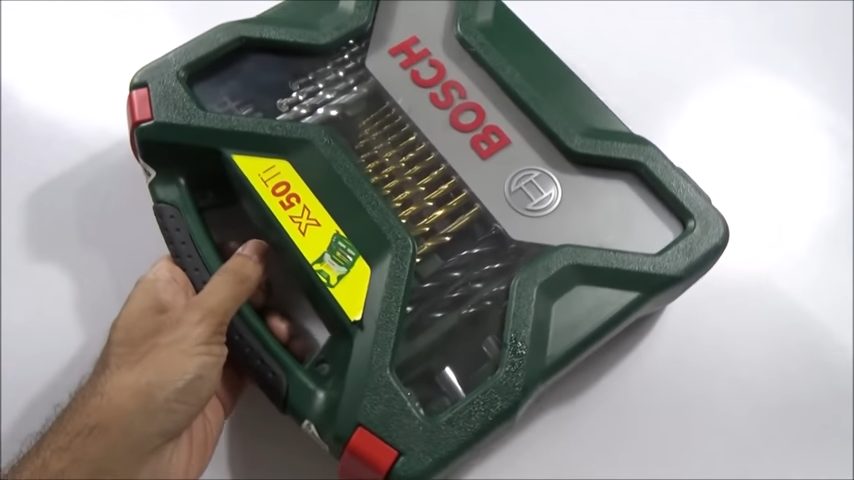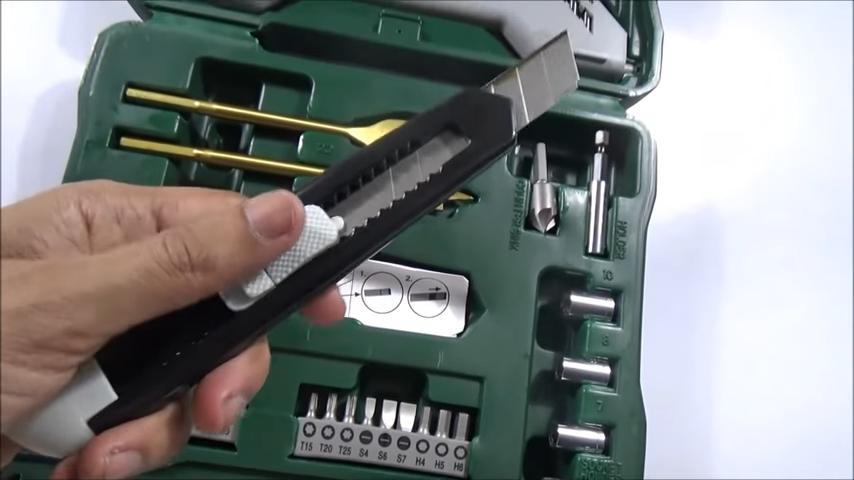What is the Best Drill Bit for Porcelain Tile (Types, Sizes, and Tips)

By the end of this guide, ill teach you the best drill bits for porcelain tiles, how to use them and why some are better than others.
Various drill bits can work on porcelain tiles; however, using the best drill bit for porcelain is the key to making neat cuts or holes. Using an inappropriate drill bit to cut porcelain tiles can cause breakage, unprofessional cuts, or holes in the tile. Being a handyman, I know which drill bit is best to cut porcelain tile without breakage, and I’ll be teaching you all I know below.
In general, the best drill bit to use to cut porcelain tiles should be a masonry drill bit: carbide-tipped or diamond-tipped. I recommend the Bosch HDG14 ¼-inch Diamond Hole Saw. It possesses many capabilities.
- It’s strong enough to sink into the porcelain tile
- Has segmented teeth that prevent overheating by generating less heat
- It has a quick-change design enabling easy handling and manipulation
I will go deeper into this.
The Best Drill Bit for Drilling Porcelain Tiles (Bosch HDG14 1/4 in. Diamond Hole Saw)
Porcelain tile drilling is a serious job, and you shouldn’t be unsure of your drill bits.
I am happy to share my experience with you after using a variety of these, from inexpensive Home Depot tools to Bosch for small holes and diamond drill bits for demanding work.
Bosch carbide-tipped tile drill bits are reasonably priced but excellent equipment. If you have a spray bottle nearby to prevent them from overheating, these work incredibly well.
I can feel the Bosch bits grinding through porcelain as they drill it fairly effectively. The bit cannot wander or stroll because of the pointed tip. Most of your needs will be met by a set of 1/8″, 3/16″, 1/4″, and 5/16″ bits. I always start with a 1/8′′ and work my way up.
Which Porcelain Tile Drill Bit is Ideal?
One of the best drill bits is the Bosch Carbide Tipped Glass, porcelain, and Tile Drill Bit Set (Bosch HDG14 1/4 In. Diamond Hole Saw)
My coworkers mark the hole with a tiny chip with a spring punch, but I never do since I’m afraid of cracking a tile, even if the risk is minor.
After drilling through the tile, I change to a conventional masonry bit, turn the drill up to maximum speed, but do not use the hammer mode. I occasionally have to use a hammer to prevent breaking the tile when the wall is particularly tough.
Yes, even pricey parts do not last forever. But good ones last a long time; I’ve had mine for a while, and most of them are still sufficiently sharp.
For sporadic use, you can also use less expensive bits, like this set of 10 ceramic tile bits in sizes 1/8, 5/32, 3/16, 1/4, 5/16, 3/8, and 1/2. If you infrequently drill tiles, a lesser quality may be acceptable, while a wider selection of sizes may be useful.
Key Features of Bosch HDG14 1/4 In. Diamond Hole Saw
Diamond grit is vacuum-brazed onto the saw: It has strong and long-lasting dependability. As a result, the saw starts up quickly and effortlessly cuts through even the toughest materials, including stone, brick, ceramic tile, and porcelain tile PE5.
Segmented Teeth: The saw’s segmented teeth produce less trash and generate less heat. However, drilling with a cup of cold water is advisable. You’ll be able to work more easily if you dip it in cold water.
Quick-change Design: Thanks to the adapter’s quick-change mechanism. As a result, switching between bits is simple. You may also quickly and easily remove material plugs, thanks to it.

Pros
- Powerful tool
- Simple to use
- Quick-change style
- Outstanding design
- Cuts quickly
Cons
- Calls need a unique center attachment or a 3/4-inch drill bit (of these types)
- Easily wears out
Diamond Drill Bit for Porcelain Tiles
I like to utilize porcelain bits with electroplated diamonds. You must drill with them while using a lot of water and a low RPM. Make the tile surface wet and, starting at a nearly 45-degree angle, hold the drill’s chuck between your thumb and fingers. To stop the tool from skipping across the tile as it is rotating, touch it.
Work further at 90 degrees to the tile after cutting the small lip. To wet the surface you are grinding through, ask a colleague to shoot water at it.
Neiko diamond pieces are my go-to choice for porcelain. These are strong enough to pierce even the hardest tile. And they work well with porcelain, ceramic, glass, and marble!
Best Diamond Drill Bit for Porcelain Tile
[aawp fields=”B00ODSS5NO” value=”thumb” image_size=”large”]
The tile is not a good surface for hole saws with pilot bits. They are intended for use with clay and stone. The carbide bit frequently pops out on porcelain. So, while hole saws CAN function, they do so slowly, and the tile can easily shatter under their edge. Even with these, use a squirt bottle to squirt water into the opening every few seconds.
Drilling with plenty of water at a reasonable pace is how diamond-tipped core drill bits are intended to be used. Start at an angle, and don’t let them get too hot.
[aawp fields=”B07D1KZGJ4″ value=”thumb” image_size=”large”]
Milwaukee diamond drill bits have also worked out reasonably well for me. With them, I’ve punched several holes while moving slowly and spraying water on them. If you’re a professional, you should have a cache of bits that are occasionally difficult to obtain locally, more than 2-3 at a time. As you continue, add several new pieces to save time. Very worthwhile.
Can You Use a Ceramic Tile Drill Bit to Drill Porcelain Tile?
Check the tool’s specifications to ensure it is properly made for ceramics because porcelain and ceramic drill bits differ. (1, 2)
I’ve had good luck using Bosch “Natural Stone Tile” drill bits on hard porcelain tiles. The spray bottle is required as normal. Drill cautiously and avoid overheating because these bits can quickly eat through the tile. It greatly helps to shoot water at it to avoid overheating.
Tips and Tricks When Drilling a Porcelain Tile
Drill Slowly and Steadily
The drill bit and the tile might become overheated if you drill too quickly and firmly. The bit will immediately get dull, and the temperature will increase. Heating tiles could cause them to break.
Avoid the Edge Tile
Avoid drilling too close to a tile’s edge because doing so increases the chance that the tile may be damaged. Reduce the drill’s speed and avoid using the hammer feature.
Mark or Mask the Areas you Want to Drill on the Porcelain Tile
Masking tape can identify precisely where you want to drill while protecting the tile, making it easier to drill through it neatly. Then, using a tile/glass bit and a reduced drill speed without using the hammer, slowly drill through the tile.
Take a look at some of our related articles below.
- How to screw into concrete without a hammer drill
- What size is a 29 drill bit
- How to use left-handed drill bits
References
(1) porcelain – https://www.newyorker.com/books/page-turner/the-european-obsession-with-porcelain
(2) ceramic – https://mse.umd.edu/about/what-is-mse/ceramics
Video Reference
